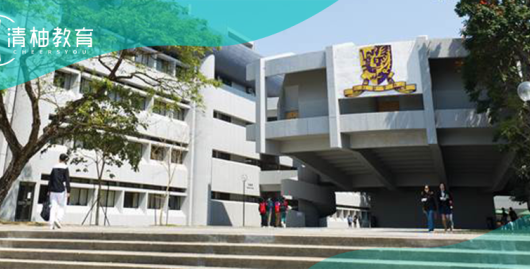在所有的GRE Verbal的所有题型中,长阅读的难度和强度也必然是最高最大的。大部分考生从战略策略的角度上来说,对长阅读所采取的都是局部放弃的战略。这种策略的选择不一定是不明智的。
一是节约了本就不富裕的时间,集中力量去突破更有把握的短阅读,逻辑单题和填空;二是有效保存了体力和精力,争取能在接下来的section中有可能取得更好的发挥和正确率。
这里我们要澄清一点,策略性的放弃长阅读并不能等同于完全的放弃!而是有选择性的对于题目进行筛选,完成可能完成的任务,解决可能解决的问题,能得一分是一分。与之相对的完全放弃则是破罐破摔随笔写答案,随心点“next”。两种方法论的初衷和执行方式有天壤之别。
今天就带大家梳理一下做长阅读的时候,一套完整的逻辑思路和做题应该是什么样子的,以及长阅读中哪些题是相对容易拿到分数的。
(3).gif)
添加清柚老师,领取更多GRE长阅读备考资料!
扫读题目+认清题型+定位核心
在做长阅读的时候,大家首先要对题型进行分析,根据不同的题目,关注定位信息。
用以下四道题举个例子:
1. The passage is primarily concerned with
2. It can be inferred from the passage that the author believes that which of the following is true of painting and architecture of the Baroque era?
3. The author’s mention of Florentine Renaissance painting serves in the context of the passage to support which of the following assertions?
4. The passage suggests which of the following about the cited “scholars”?
1 主旨内容题
全文的主旨和讨论的中心:
1.The passage is primarily concerned with
2 推断题
根据文中信息推断:
2. It can be inferred from the passage that the author believes that which of the following is true of painting and architecture of the Baroque era?
4. The passage suggests which of the following about the cited “scholars”?
3 细节题
定位关键细节:
3. The author’s mention of Florentine Renaissance painting serves in the context of the passage to support which of the following assertions?
回到文章进行解读
在分析完题目之后,我们就要回到文章中进行解读,找寻答案啦。这里有两点需要注意:
1. 着重关注每段的首句和末句
2. 理清段间关系
用一道例题来具体感受一下:
A primary value in early twentieth-century Modernist architectural theory was that of “truth to materials”, that is, it was essential that a building’s design express the “natural” character of the building materials. This emphasis would have puzzled the architects of the Italian Renaissance (sixteenth century), a period widely regarded as the apex of architectural achievement, for Renaissance architects’ designs were determined only minimally by the materials employed. The diversity of Italy’s natural resources provided Renaissance architects with a wide variety of building materials. The builders of the Pitti Palace (1558-1570) used great blocks of Tuscan stone, just as Etruscans living in the same part of Italy had done some twenty centuries earlier. Had the Florentine Renaissance builders aped the Etruscan style, it might be said that their materials determined their style, since Etruscan style matched the massive, stark, solid character of the stone. But these same materials, which so suited the massive Etruscan style, were effectively used by the Florentine Renaissance to create the most delicate and graceful of styles.
A similar example of identical materials used in contrasting styles characterizes the treatment of Roman travertine marble. When Baroque architects of seventeenth-century Rome desired a massive and solid monumental effect, they turned to travertine marble, whose “natural effect” is, indeed, that of spacious breadth and lofty, smoothly rounded surfaces. Yet during the Renaissance, this same material had been used against its “nature,” in the Florentine tradition of sharply carved detail. Italian Renaissance architecture was shaped less by the “nature” of the materials at hand than by the artistic milieu of Renaissance Italy, which included painting and sculpture as well as architecture. While Roman travertine marble may have lent itself to fine carving, the Florentine passion for fine detail is no less marked in Florentine Renaissance painting than in Florentine Renaissance architecture. Similarly, in the next century, the emphasis on shading and corporeal density in Baroque painting mirrored the use of Roman travertine marble in Baroque architecture to create broad shadow and powerful masses.
The ingenuity of Renaissance architects extended beyond merely using a material in a way not suggested by its outward natural appearance. If they conceived a design that called for a certain material either too expensive or difficult to work with, they made no scruple about imitating that material. Their marbles and their stones are often actually painted stucco. When the blocks of masonry with which they built were not in scale with the projected scheme, the real joints were concealed and false ones introduced. Nor were these practices confined, as some scholars insist, to the later and supposedly decadent phases of the art. Material, then, was utterly subservient to style.
文章解析
首段,通过和现代艺术理论的对比,突出文艺复兴时期建筑特色:艺术风格不拘泥于建材本身的性质,并用Etruscans和Florentine Renaissance builders对Tuscan stone的运用做了对比:用来表达宏大主题的材料,文艺复兴建筑师用来表达精致优雅风格。
第二段,前半段延续首段,通过另一案例,Baroque architects和Renaissance architecture对travertine marble的运用的对比,说明同样材料用于不同风格。后半段介绍不同艺术种类之间风格的一致性,探究文艺复兴建筑风格的解释。
第三段,介绍Renaissance architects的“创造性”不仅局限于材料的使用方面。
回到文章进行解读
完成每段段落大意的读解和段间关系梳理后,可以直接解决最简单的主旨题!
Q1. The passage is primarily concerned with
A. explaining the differences in quality among different kinds of building materials
B. discussing the differences among Etruscan, Florentine Renaissance, and Roman Baroque architecture
C. describing how different materials influenced architecture in different cities
D. describing the manner in which Renaissance architects often resorted to artificial materials and illusionistic effects
E. demonstrating the attitude of sixteenth- and seventeenth-century Italian architects toward the use of building materials
这道题考察的是文章主旨,我们具体分析一下这几个选项:
A. 解释不同种类建筑材料之间的质量差异。严重离题。错误。
B. 讨论Etruscan,Florentine文艺复兴和罗马巴洛克式建筑之间的差异。引用Etruscan和Roman Baroque是为了和Florentine Renaissance作比较,用以说明“材料完全服从于风格”。错误。
C. 描述不同材料如何影响不同城市的建筑。“different cities”没有体现。错误。
D. 描述文艺复兴时期的建筑师经常使用人造材料和幻觉效果的方式。这不是主题,主题是“材料完全服从于风格”。错误。
E. 展示十六世纪和十七世纪意大利建筑师对建筑材料使用的态度。态度就是“Renaissance architects' designs were determined only minimally by the materials employed”和“Material, then, was utterly subservient to style”。E选项相对最准确本文的主旨是介绍意大利建筑师对于建筑材料的态度,对比时提到巴洛克建筑。正确。
正确答案:E
主旨题也是GRE长阅读中最容易拿分的题目,因为不需要定位到原文中的某个具体信息,只需要对整篇文章主题的有一个大致的把握,如果大家有空余时间一定要优先做主旨题,把这道题的分数拿到。
想要提高长阅读正确率,这些备考资料也不能少↓
1)单词&长难句基础
《GRE必考1000词》、《GRE长难句图解与精练》

2)方法论思维导图 - 《GRE阅读方法思维导图》
.png?x-oss-process=style/opt-webp)
3)高频真题 - 《GRE阅读必考220篇》
.png?x-oss-process=style/opt-webp)
4)进阶词汇
《GRE词汇-意群必背》、《GRE逻辑联结词》等
.png?x-oss-process=style/opt-webp)
5)全真模考
在考试前的一到两周内,需要用全真考试系统进行模考练习,适应机考的形式,稳定刷题手感,把握考试节奏。
(6).gif)
添加清柚老师,获取更多GRE备考资料
(3).gif)










